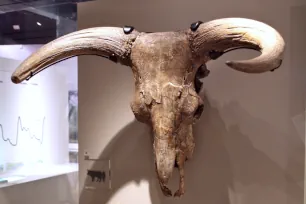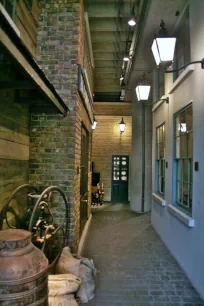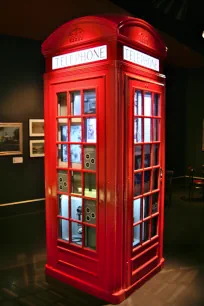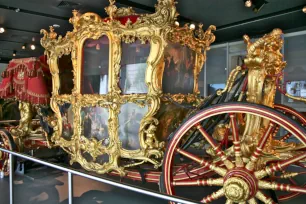The Museum of London illustrates the history of the capital city of the United Kingdom, from prehistory to the early twenty-first century. The museum is one of the largest and also one of the most interesting of its kind.


Until the December 2022 the museum was housed in the Barbican, at the site of a former Roman fort. It was located at a busy intersection near London Wall, a street that follows the route of the old Roman wall around the city.
History
The Museum of London opened in 1976 in a modern building designed by Powell and Moya as part of the Barbican, a typical postwar complex with lots of concrete and several high rises in Brutalist style. The museum was created by combining the collections of the Guildhall Museum and the London Museum in Kensington Palace.
Since the museum had reached its capacity at the Barbican site, it decided in May 2016 to relocate to a larger in the Smithfield Market, a huge Victorian-era market hall situated nearby at West Smithfield. The museum is expected to open at the new site in 2026.
The Galleries




The museum has an impressive collection of objects related to the history of the city. The museum’s galleries are spread over two floors and arranged in chronological order. Visitors enter the museum from the upper floor, where the exhibitions covering the history of London from prehistoric times to the Great Fire of London in 1666 are located. The lower floor houses the galleries of modern London, from the late seventeenth century to today.
London Before London
Excavated objects and tools from prehistoric times give us an idea of life around the banks of the River Thames from before the founding of the city. You can see a 6000-year-old axe head, a skull of an auroch, a tusk from a mammoth, weapons and utensils as well as the 5000-year-old remains of the Shepperton woman, one of the oldest people found in the region.
Roman London
One of the most impressive galleries in the Museum of London is devoted to Londinium (Roman London), established in 43 BC during the invasion of Brittania by Emperor Claudius. Here you can see a beautiful mosaic floor, wall frescoes, marble busts from the Temple of Mithras and many objects such as coins, jewelry and even Roman bikinis! Scale models of the Forum and the harbor of Londinium give us an idea of the size of London during the Roman era.
Saxon and Medieval London
The Saxon and Medieval galleries show us the development of London after the retreat of the Romans in 410, a time when the city fell into dark times due to religion, wars and the Black Plague. The last exhibition on the upper floor shows the devastation caused by the Great Fire of 1666, which razed a third of the city to the ground.


Modern London
The lower level of the museum shows the explosive expansion of the city after the Great Fire and the many technological and social developments during the Victorian Age. An interactive map shows the wealthiest and poorest areas in Victorian London. The Victorian Walk, a completely reconstructed street with authentic nineteenth century shops, is one of the museum’s must-sees. Also, don’t miss the magnificent Art Deco elevator from the Selfridges department store.
The political and social turbulences at the end of the nineteenth century and throughout the early twentieth century are also highlighted. Historic cars such as a Model T Ford and a Ford from 1936 illustrate the rapid changes in transportation; car ownership in London almost tripled from 1920 to 1930. Finally, there’s a captivating exhibition about the devastation and human suffering caused by the London Blitz during the Second World War.
The gallery ‘London World City’ focuses on the development of London after the war into the modern metropolis that we know today. Technology and design are the main theme here, and you can see items such as a black-and-white television, a Vespa scooter, a rotary telephone and fashion from the seventies.
Lord Mayor’s State Coach

One of the museum’s crowd-pullers is the Lord Mayor’s State Coach, the centerpiece of the City Gallery. The gilded coach was commissioned in 1757 and is still used by the Mayor of London during the annual Lord Mayor show. The coach holds its own even in comparison with the queen’s Gold State Coach (on display at the Royal Mews), and is full of splendor, with painted panels and Baroque ornaments.
Museum of London Docklands
Only a small part of the one million items of the Museum of London’s collections is on display. In fact, the museum has so much to display that it opened another branch in the Docklands, at the West India Quay in Canary Wharf. This museum focuses on the history of London as a port.

